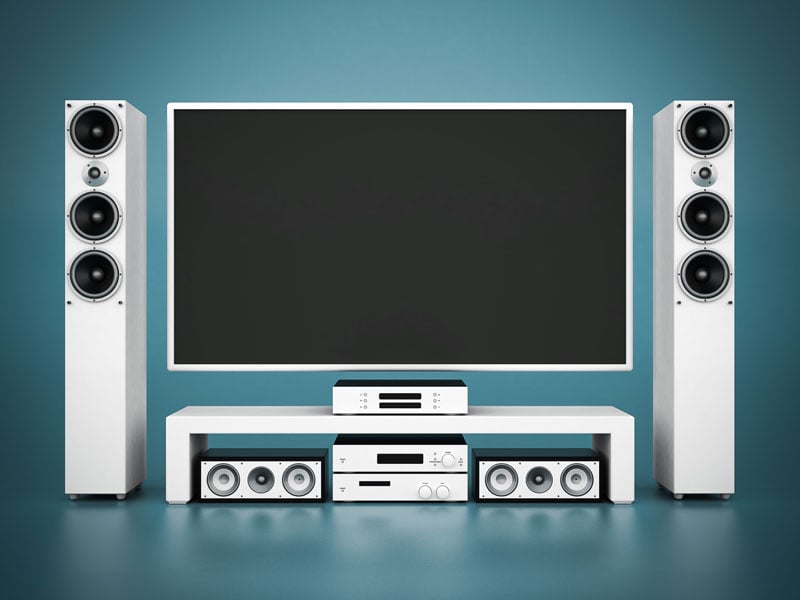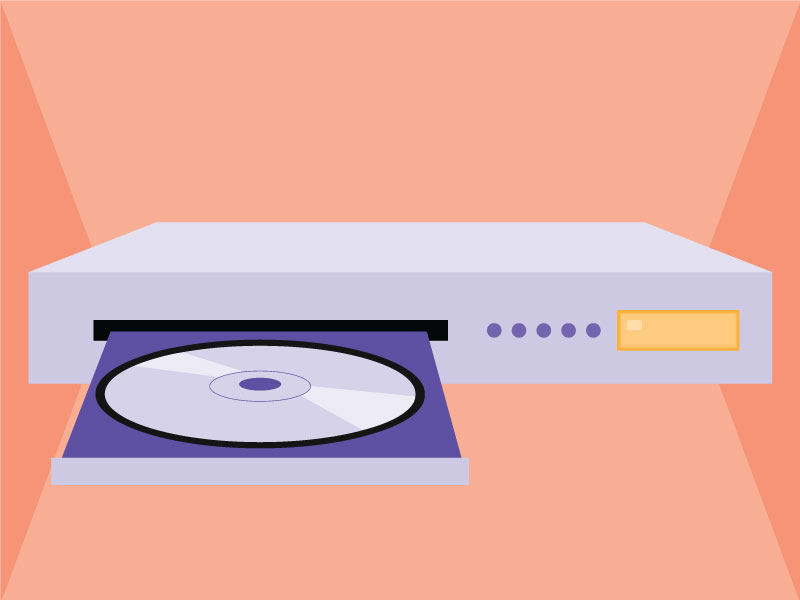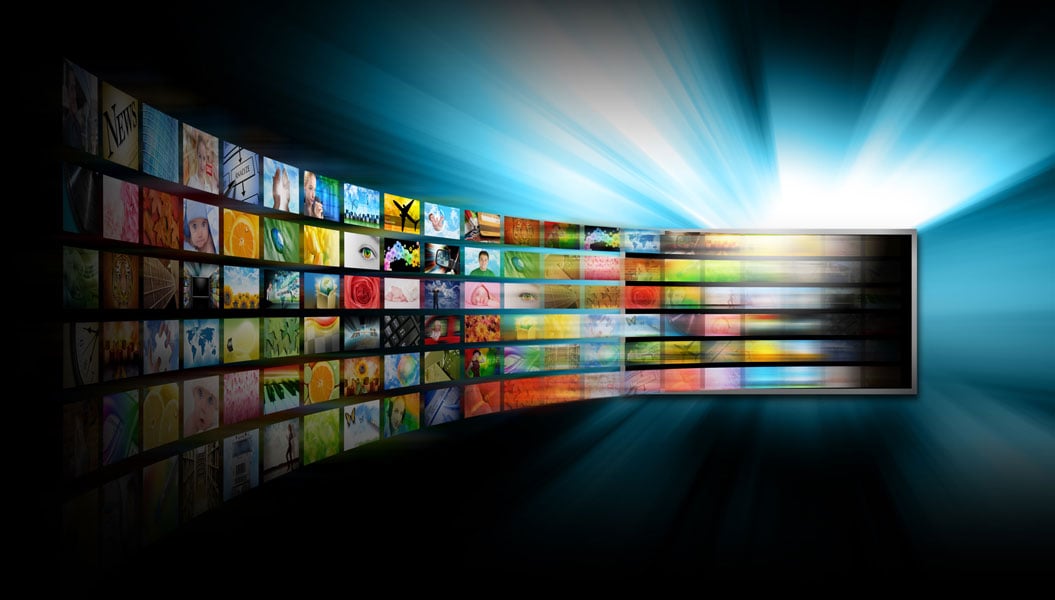Home entertainment has seen significant advancements in the last decade. From the advent of high-definition television (HDTV), Blu-ray Disc (BD), home theater in-a-box, DVD recorders, TiVO and DVRs, HDMI, the digital projector, network media players and extenders, home media servers, DTV, LED, and tactile motion control. Each advancement has contributed to a more easy-going and entertaining home theater room experience. In addition, the development of home theater room furniture has improved home theater acoustics for a better viewing experience. The ergonomics in entertainment seating has also provided a new level of relaxation for every viewer in the past decade. Newer innovations continue in stride to provide the most realistic and relaxing experience that the home entertainment industry has to offer.
The Advancement of Home Theater
The advent of home-definition television (HDTV) and the development of compatible components to match the resolution produced from HDTV units became a priority for manufacturers and consumers. The transition from VCR to the traditional DVD player became a monumental step in the advancement of home theater room entertainment. Video upscaling allows DVD playback capability to match the performance capabilities of the HDTV, which laid the foundation for high-definition components.
The Blu-ray disc became one of the most highly anticipated home theater products of the decade, mainly because of the underlying laser technology’s compatibility with HDTV. It first appeared in 2001, and drew significant attention from consumers at popular electronic trade shows. Blu-ray finally arrived on the consumer market in late 2006, and while many still doubted its popularity, it became one of the most promising developments in home room theater entertainment.
Home Theater in-a-box
At the turn of the century, many consumers realized that their television and stereo equipment could not handle the capabilities produced by the traditional DVD. However, the majority of the consumers could not justify forking out the expenses for bulky home theater components and large speakers. As a result, some audio and visual manufacturers developed a concept that would introduce home theater to the masses during the first decade of the 21st century.
This concept became known as the “home theater in-a-box,” an all-inclusive universal set of theater components, speakers, connection cables, and wires. Millions of consumers started to purchase this easily accessible and affordable package early in the decade, which contributed the rapid development of home theater room components and accessories.

From VCR to DVD
The earliest DVD versions became increasingly popular at the turn of the century; however, the VCR did not fizzle out until the introduction of the DVR. The rise of the DVR, copyright protection on cable and satellite television, and Internet video streaming became the forefront of a downward trend of consumers interested in recording their favorite programs.
The introduction of TiVO, a VCR like device that utilizes a hard drive, instead of tape or hard disc to record television programs, started the decline of consumer interest in traditional VCRs. As soon as TiVO was released, the consumer market touted its ingenuity by introducing key phrases, such as “I just TiVO’ed that movie last night!” These catch phrases were eventually exploited by major talk shows, news networks, and even television sitcoms. Cable and satellite operators incorporated their own service, and even offered their subscribers generic versions of the unit, also known as personal video recorders (PVRs) and integral digital video recorders (DVR) as part of their service package.

Digital Sound
Other revolutionary developments in the home theater room industry include HDMI, a compact connection intermediary that allows at least one or more connections between audio and video consoles.
The HDMI concept freed the clutter that came with multiple units and their required connection cables and wires. HDMI would become a great accessory for the digital sound projector, a series of small speakers with multiple channels that project sounds at various points throughout a home theater room all within one cabinet. The unit houses all of the needed audio amplifiers and processors. The digital sound project provided a surreal surround-sound effect that propelled the evolution of home theater room entertainment to a whole new level.

PC and Media
The increased convergence of PC and home theater room systems made way to the rise of the network media player and extender. The network media player and extenders allow users to access PC media content, streaming and downloading media, and still image content directly from the World Wide Web, then forwarded to play directly on the television or home theater room system.
In addition to the network media players and extenders, the increase in CD, DVD, and Blu-ray collections also impacted home theater room entertainment. Consumers often complained of having to store all of the bulky discs in a suitable storage space. The advent of the media server addressed this problem. The media server allows the consumer to catalog, sort, manage, and access all music and video collections on a digital hard drive. Many tech gadget enthusiasts have rightfully coined it the “jukebox” of the 21st century.

Further Techonlogical Advances
Further developments in the home theater room furniture industry included consoles suitable for the digital television (DTV) transition. The mandatory switch from all analog to digital television in 2009 caused many people to shop on a frenzy. These consumers need solutions to receive HDTV broadcasting without breaking the bank, especially after the onslaught of the economic downturn in 2008. The mandatory switchover meant that more consumers would purchase home theater room furniture compatible with HDTV.
The incorporation of light emitting diode (LED) technology into televisions has provided a green thumbprint on newer technological advancements in the theater room furniture industry. LED technology works in tandem with HDTV units, and will vastly contribute to the further development of television and video projection.
Wifi and bluetooth home theater systems are wireless, compact and eliminate the challenge of hiding unsightly wires.
Lastly, tactile motion and motion control has vastly contributed to the home theater room experience by negating the rattle emitted by subwoofers. These motion control devices provide a buffer for more comfortable entertainment seating. For instance, D-box technology has started to emerge that provides comfortable home movie chairs. These movie chairs for home have built-in actuators that are ideal for gaming use. Other motion actuator devices can be placed on or under existing home movie chairs for a life-like experience. Viewers can feel every bump in the road, explosion, impact, and vehicle pitch that the motion cues signal while the film plays. Home theater enthusiasts vouch that motion actuators create a surreal effect in entertainment seating.
The next step in home theater room entertainment may involve three-dimensional and further developments in existing technologies. Home theater enthusiasts can rest assured that they will receive the best technology that manufacturers have to offer in the home entertainment industry.
Follow these links to learn more about the technological advancements in home theater room furniture:
Home Theater Seating
- Comfortable Recliner Chairs
- Home Theater Chairs
- Black Leather Recliner
- Powered Recliners
- Theater Sofa
- Heated Recliner Chair
- Room Sectionals
- In Home Movie Theater Pricing
- Best Buy Couches
- Furniture Sectional Sale
- Home Movie Theater Room Chairs
- 3 Theater Seat Recliner
- Modern Furniture Online
- Real Leather Recliner For Sale
- Leather Reclining Movie Theater Chairs
Decor & Accessories
- Media Room Carpet
- Home Theater Decor
- Popcorn Machine for Sale
- In Home Theater Ideas
- Theatre Wall Lights
- Home Theater Acoustic Panels
- Theater Sign
- Home Theater Bass Shaker
- Home Theatre Power Recliner With Adjustable Headrest
- Blue Leather Loveseat Recliner
- Modern Grey Sectional
- Palliser Flicks 41416 Theater Seating
- Riser Recliners
- Vega Lhr Max Recliner
- Home Theater Seating Leather Semi Circle
Top Pages
- Guy Furniture
- Southern Motion Home Theater Seating
- Four Seater Recliner Sofa
- Buy Auditorium Chairs
- Luxury Home Theater Seating
- White Leather Recliners
- Kids Seating
- Blue Diamond Stitch Seats
- Blue Leather Individual Recliner
- Recliners For Man Cave
- Leather Reclining Loveseats
- Native Resolution Definition
- Power Reclining Leather Sectionals
- Microsuede Recliners
- Brown Sectional Living Room

